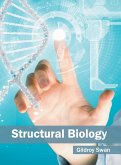Structural Equation Modeling (SEM) is a technique that is used to estimate, analyze and test models that specify relationships among variables. The ability to conduct such analyses is essential for many problems in ecology and evolutionary biology. This book begins by explaining the theory behind the statistical methodology, including chapters on conceptual issues, the implementation of an SEM study, and the history of the development of SEM. The second section provides examples of analyses on biological data including multi-group models, means models, p-technique and time-series. The final section of the book deals with computer applications and contrasts three popular SEM software packages. Aimed specifically at biological researchers and graduate students, this book will serve as a valuable resource for both learning and teaching the SEM methodology. Moreover, data sets and programs that are presented in the book can also be downloaded from a web site to assist the learning process.
Table of contents:
Preface; Part I. Theory: 1. Structural equation modeling: an introduction Scott L. Hershberger, George A. Marcoulides and Makeba M. Parramore; 2. Concepts of structural equation modeling in biological research Bruce H. Pugesek; 3. Modeling a complex conceptual theory of population change in the shiras moose: history and recasting as a structural equation model Bruce H. Pugesek; 4. A short history of structural equation models Adrian Tomer; 5. Guidelines for the implementation and publication of structural equation models Adrian Tomer and Bruce H. Pugesek; Part II. Applications: 6. Modeling intraindividual variability and change in bio-behavioural developmental processes Patricia H. Hawley and Todd D. Little; 7. Examining the relationship between environmental variables and ordination axes using latent variables and structural equation modeling James B. Grace; 8. From biological hypothesis to structural equation models: the imperfection of causal translation Bill Shipley; 9. Analyzing dynamic systems: a comparison of structural equation modeling and system dynamics modeling Peter S. Hovmand; 10. Estimating analysis of variance models as structural equation models Michael J. Rovine and Peter C. M. Molenaar; 11. Comparing groups using structural equations James B. Grace; 12. Modeling means in latent variable models of natural selection Bruce H. Pugesek; 13. Modeling manifest variables in longitudinal designs - a two-stage approach Bret E. Fuller, Alexander von Eye, Phillip K. Wood and Bob Keeland; Part III. Computing: 14. A comparison of the SEM software packages Amos, EQS and LISREL Alexander von Eye and Bret E. Fuller.
Structural equation modeling (SEM) is a statistical methodology which, in this book, is applied to biological research questions. The book will serve as a valuable resource for both learning and teaching the SEM methodology and is adapted to the statistical knowledge and background of the research biologist.
Applies structural equation modeling, a statistical methodology, to biological research questions.
Table of contents:
Preface; Part I. Theory: 1. Structural equation modeling: an introduction Scott L. Hershberger, George A. Marcoulides and Makeba M. Parramore; 2. Concepts of structural equation modeling in biological research Bruce H. Pugesek; 3. Modeling a complex conceptual theory of population change in the shiras moose: history and recasting as a structural equation model Bruce H. Pugesek; 4. A short history of structural equation models Adrian Tomer; 5. Guidelines for the implementation and publication of structural equation models Adrian Tomer and Bruce H. Pugesek; Part II. Applications: 6. Modeling intraindividual variability and change in bio-behavioural developmental processes Patricia H. Hawley and Todd D. Little; 7. Examining the relationship between environmental variables and ordination axes using latent variables and structural equation modeling James B. Grace; 8. From biological hypothesis to structural equation models: the imperfection of causal translation Bill Shipley; 9. Analyzing dynamic systems: a comparison of structural equation modeling and system dynamics modeling Peter S. Hovmand; 10. Estimating analysis of variance models as structural equation models Michael J. Rovine and Peter C. M. Molenaar; 11. Comparing groups using structural equations James B. Grace; 12. Modeling means in latent variable models of natural selection Bruce H. Pugesek; 13. Modeling manifest variables in longitudinal designs - a two-stage approach Bret E. Fuller, Alexander von Eye, Phillip K. Wood and Bob Keeland; Part III. Computing: 14. A comparison of the SEM software packages Amos, EQS and LISREL Alexander von Eye and Bret E. Fuller.
Structural equation modeling (SEM) is a statistical methodology which, in this book, is applied to biological research questions. The book will serve as a valuable resource for both learning and teaching the SEM methodology and is adapted to the statistical knowledge and background of the research biologist.
Applies structural equation modeling, a statistical methodology, to biological research questions.








